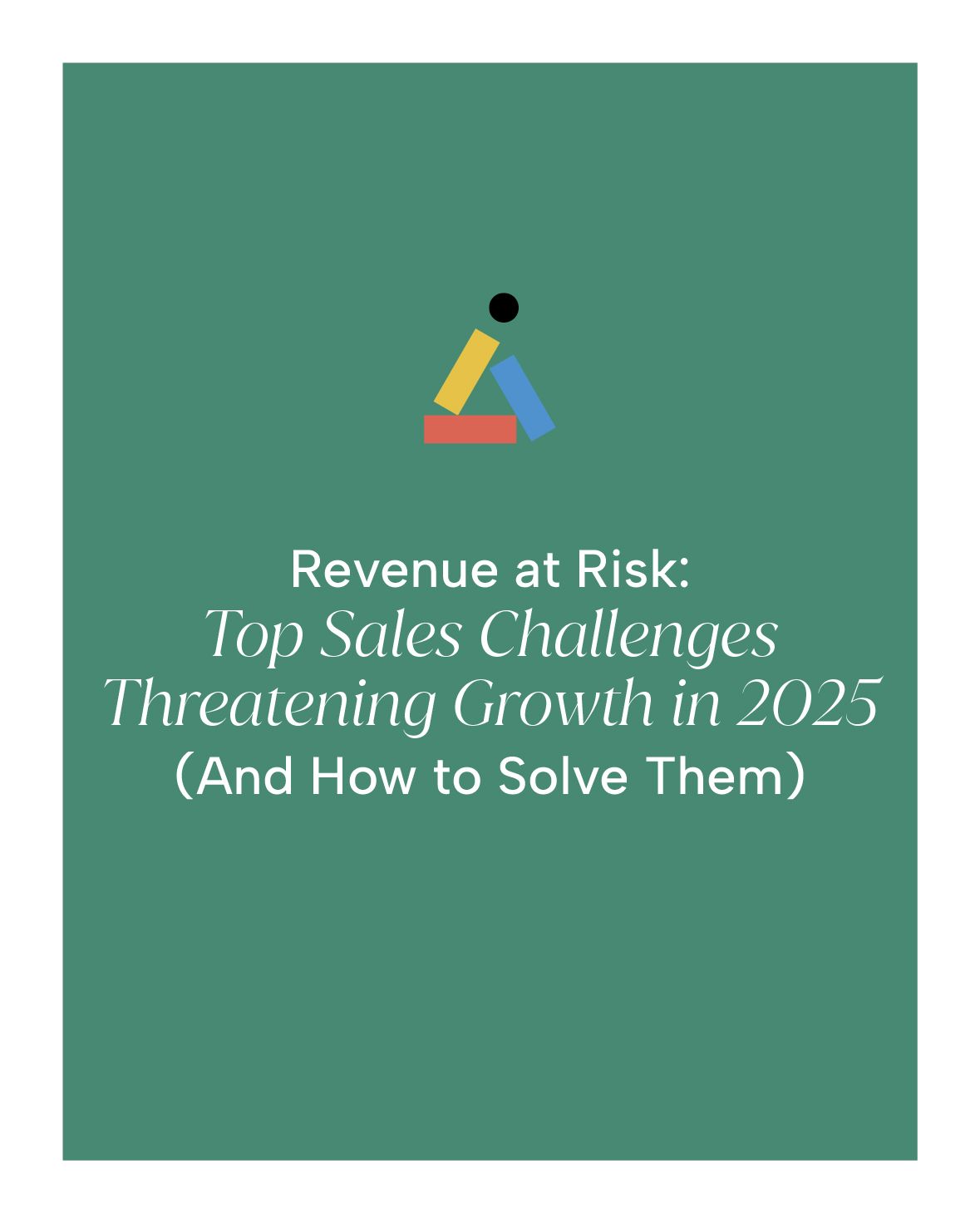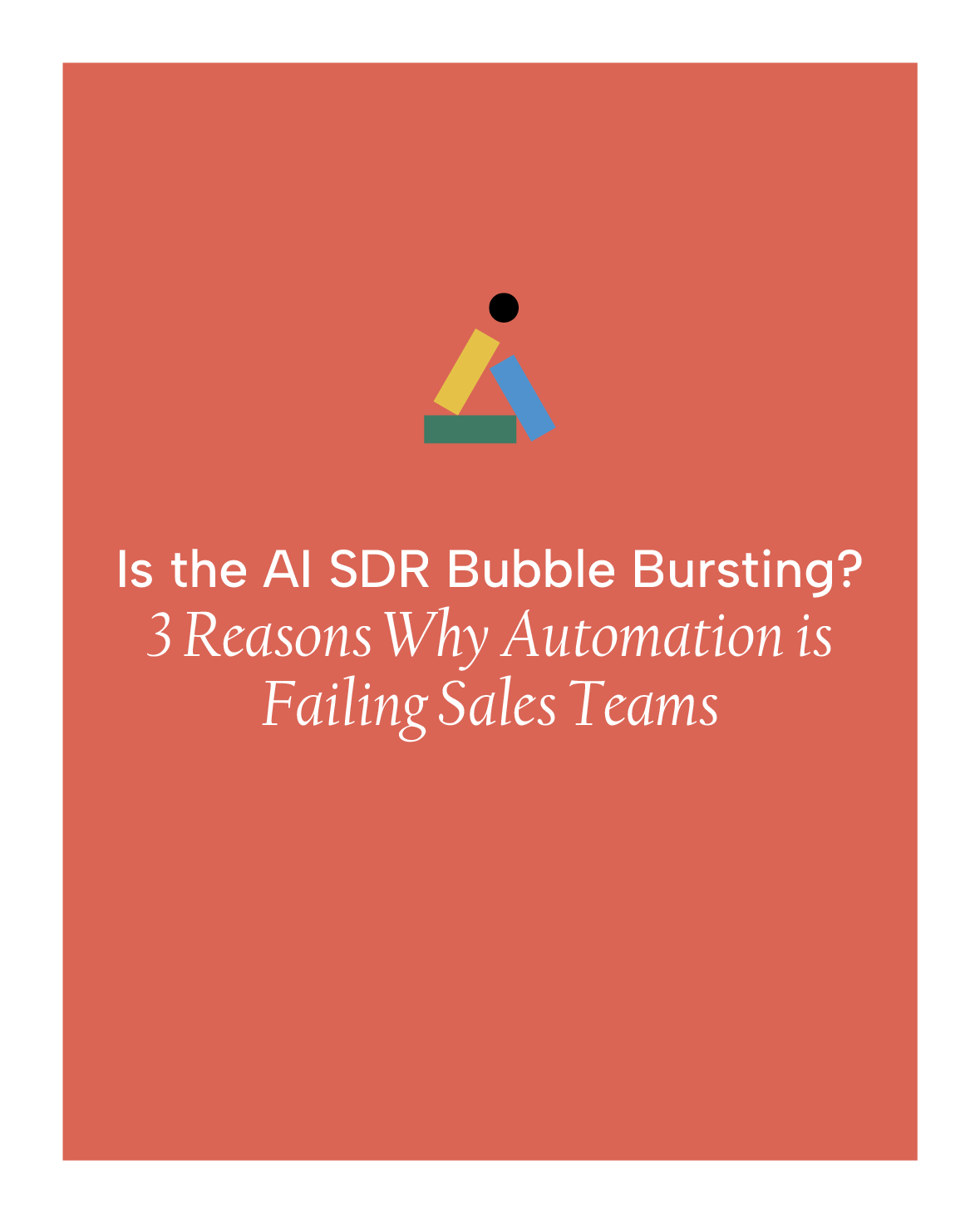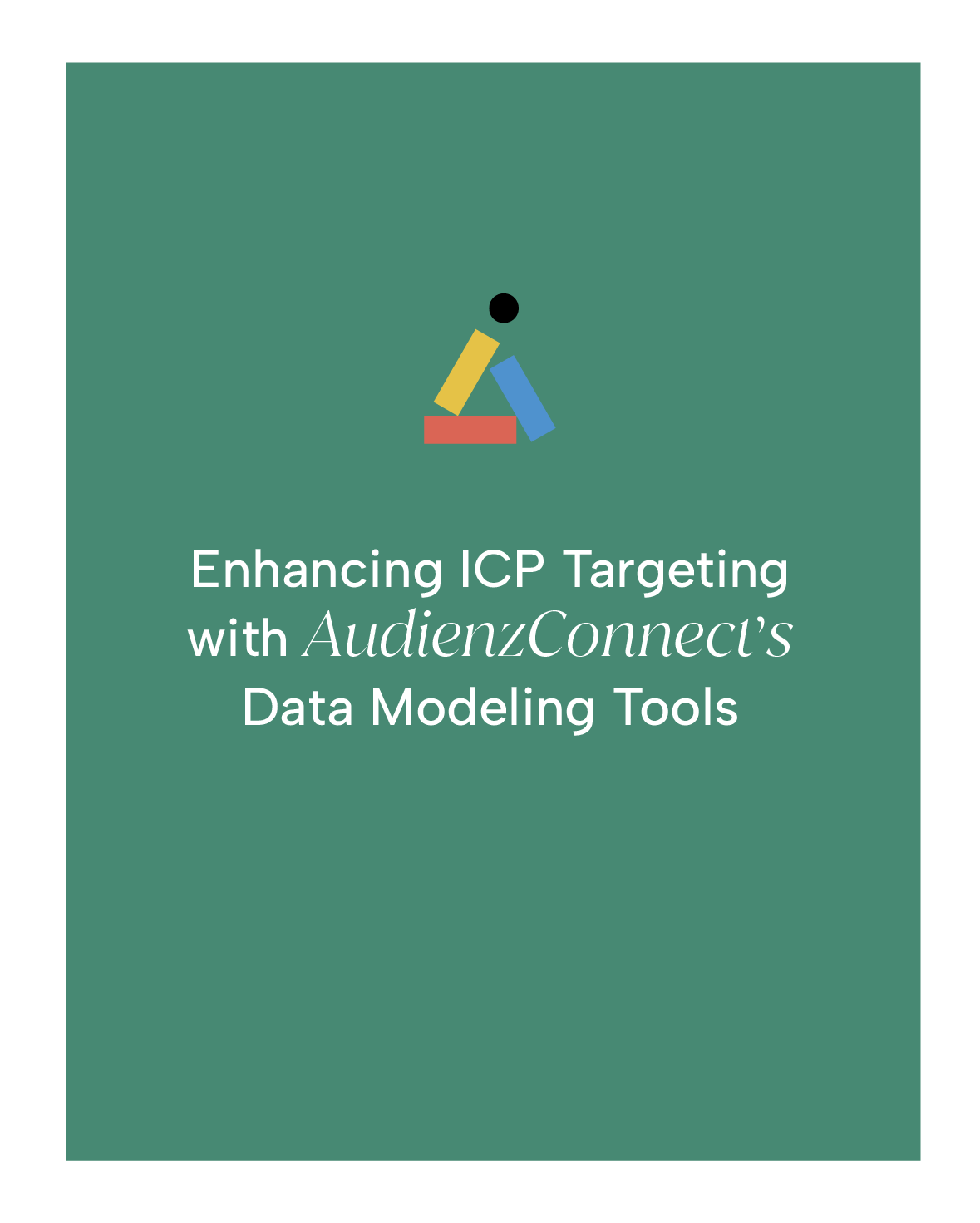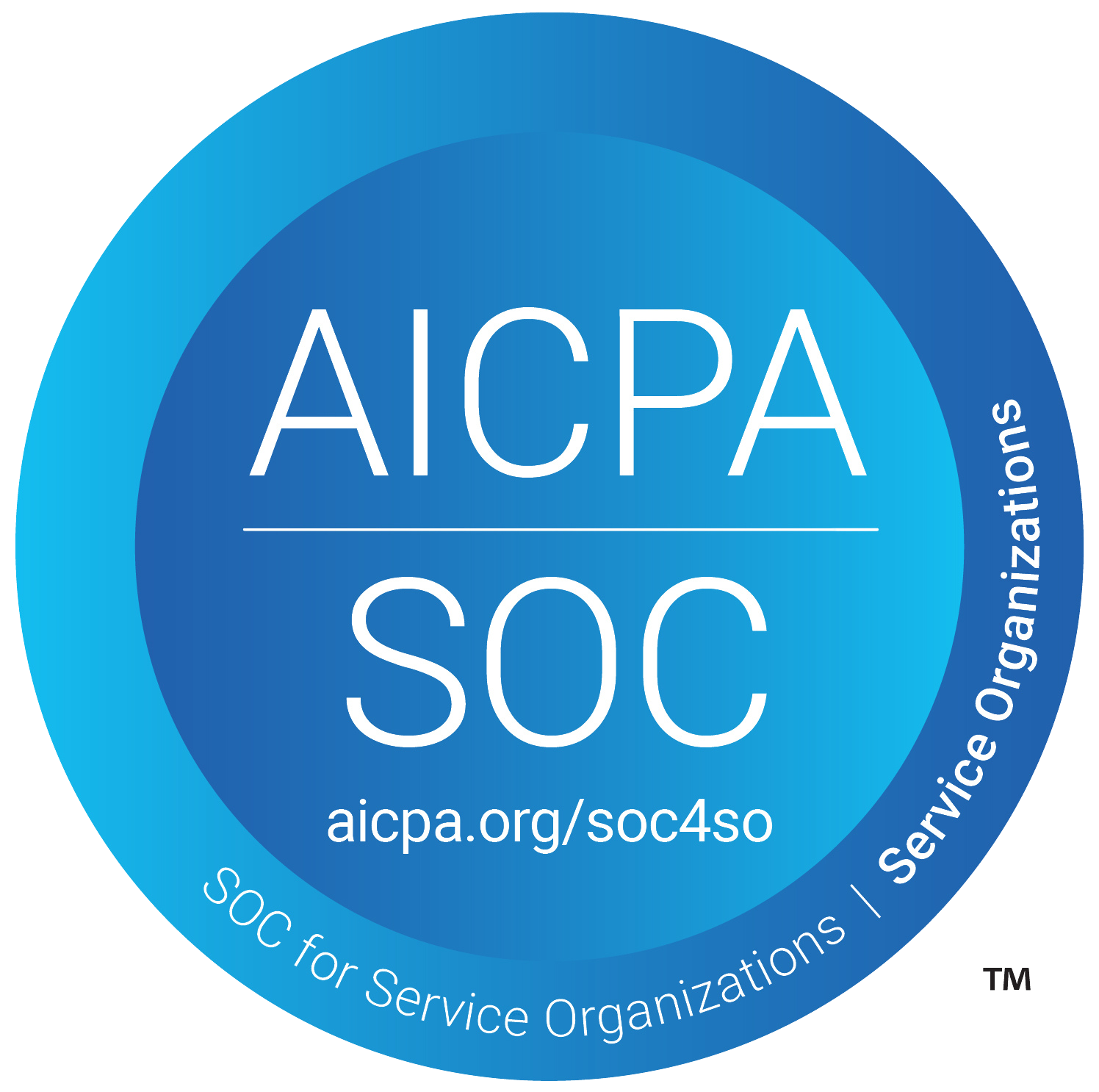Unlocking Sales Productivity: Mastering Prospecting and Lead Qualification for Success
In a world where sales teams are continually challenged to adapt and respond quickly to changing market dynamics, the ability to efficiently prospect and qualify leads has never been more critical. According to a report from HubSpot, many sales professionals believe that prospecting is the most challenging part of the sales process. This statistic underscores the importance of refining these foundational tactics to boost overall sales productivity.
In this blog, we’ll explore innovative ways to enhance prospecting and lead qualification.
The Importance of Efficient Prospecting
Imagine setting off on a journey without a map. You may find interesting places along the way, but the chances of arriving at your destination are slim. Similarly, inefficient prospecting can lead sales teams astray, diverting their focus from high-quality leads to unqualified opportunities.
Prospecting is not just about casting a wide net; it's about targeting the right individuals who are likely to convert. Effective prospecting yields a robust sales pipeline.
According to a report from HubSpot, 65% of sales professionals say that prospecting is the most challenging part of the sales process. This insight highlights the critical nature of refining these foundational tactics to boost overall sales productivity.
Gartner reports that high-performing sales teams focus 3.5 times more on finding qualified leads than their less effective counterparts, leading to improved close rates by as much as 25%.
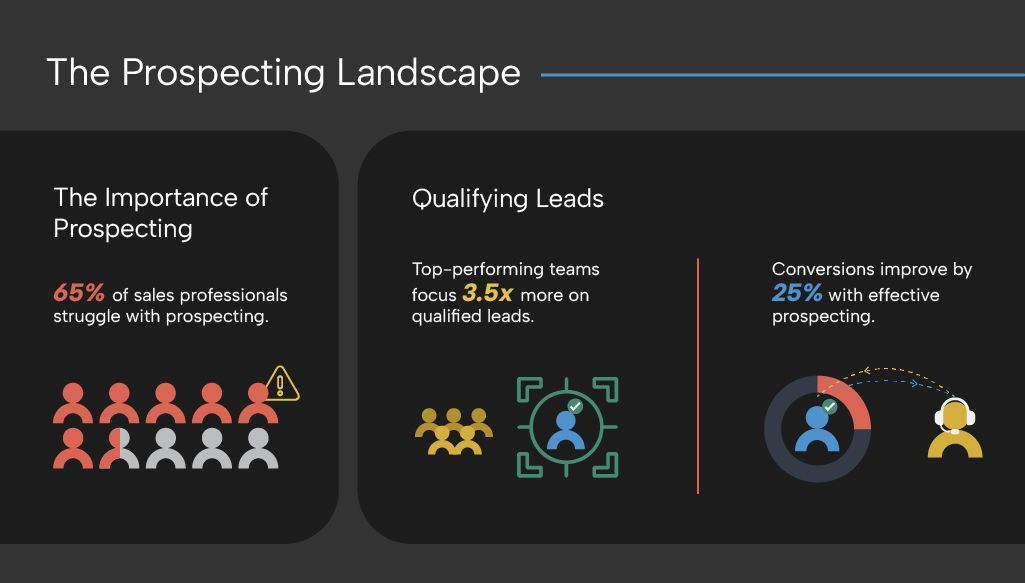
Lead Qualification: The Key to Closing More Deals
If prospecting is the initial stage of your sales journey, lead qualification serves as the gatekeeper, ensuring that your sales team spends time on prospects with genuine interest and need. A report from Sales Benchmark Index states that businesses that excel in lead qualification enjoy 13% higher close rates and 34% faster sales cycles.
The most common lead qualification methods—BANT (Budget, Authority, Need, Timing), CHAMP (Challenges, Authority, Money, Prioritization), and ANUM (Authority, Need, Urgency, Money)—allow sales professionals to identify prospects’ readiness to buy. However, as buyers become more informed, traditional methods often fail to capture their nuanced behaviors and intent signals.
Strategies to Enhance Prospecting and Lead Qualification
To truly unlock sales productivity, implementing a few innovative strategies can make a marked difference.
- Segment Your Audience: Utilize data analytics to segment your audience based on behavior, geography, and demographics. By understanding your ideal client profiles, you can tailor your outreach more effectively.
- Personalized Communication: Boring, generic sales pitches can quickly fall flat. Customized messages that resonate with prospects’ interests and needs lead to higher engagement rates.
- Maintain a Consistent Follow-Up Schedule: Persistence pays off! Establish a structured follow-up plan and utilize automated reminders to keep track of your leads’ journey.
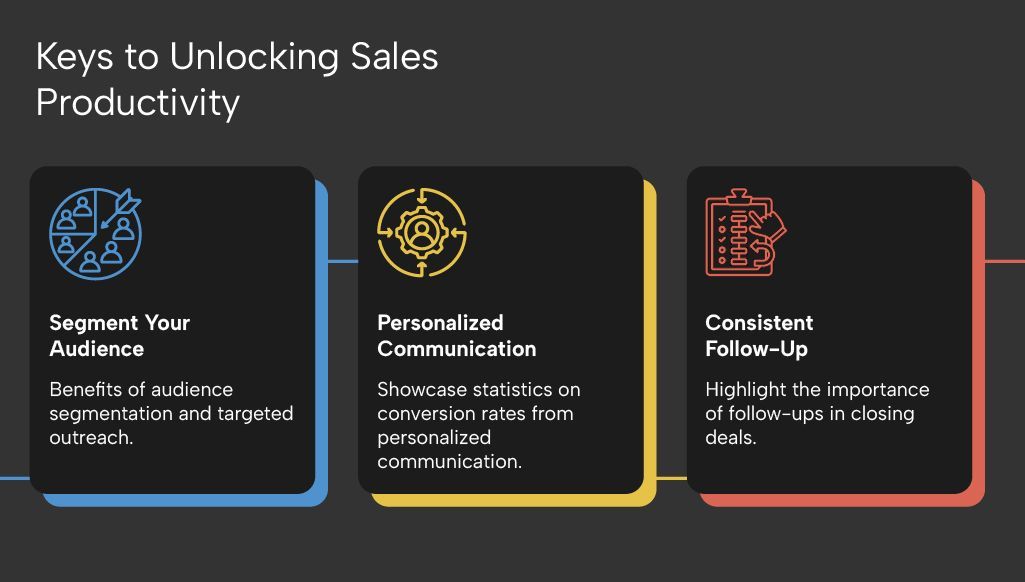
The Power of Technology in Sales
In the digital age, leveraging technology is essential for efficient prospecting and lead qualification. According to a study by Aberdeen Group, organizations that utilize data-driven insights are 3.5 times more likely to report improved sales performance. Incorporating data analytics into your sales process allows teams to move away from guesswork, relying instead on actionable data that drives results.
Integrating technology into your sales process, you can maximize both the effectiveness and efficiency of your team. The ability to analyze individual behaviors, track intent signals, and optimize engagement strategies can significantly enhance lead qualification efforts.
Revolutionizing Sales Prospecting with Audienz.ai
Audienz.ai powerful platform goes beyond traditional lead qualification by employing person-level intent signals. By analyzing multiple digital touchpoints, the platform allows sales teams to pinpoint individuals who are actively engaged and ready to move forward.
- Capture Intent Signals: Audienz.ai collects vast amounts of intent data, tracking individual behaviors across various channels. This information lets sales teams see beyond company-level data, revealing precisely who is interested in their solution.
- Identify Real Buyers: This platform helps eliminate guesswork, showcasing genuine buyers exhibiting active intent. With insights that highlight key behaviors and signals, sales professionals are empowered to engage with potential clients who are most likely to convert.
- Engage Effectively: Timeliness is of the essence in sales. Audienz.ai not only helps identify who to engage with but also when. The ability to reach out at just the right moment boosts your chances of capturing deals before competitors can pounce.
Conclusion: Road to Sales Success
Unlocking sales productivity revolves around efficient prospecting and effective lead qualification. By understanding the landscape of your prospects and implementing strategic practices, your sales team can enhance their ability to close deals and exceed their targets.
Innovative tools, such as those offered by Audienz.ai, provide valuable person-level intent signals that further refine prospecting efforts. By analyzing multiple digital touchpoints, these tools help sales teams pinpoint individuals who are actively engaged and ready to move forward.
With a fortified sales process anchored in data-driven insights, your team won’t just survive in the competitive landscape—they will thrive. Embrace this opportunity to evolve your approach, streamline your efforts, and ultimately, drive extraordinary sales success.
Key Takeaways
- Efficient prospecting is crucial for building a robust sales pipeline.
- Lead qualification methods improve close rates and speed up sales cycles.
- Personalization, segmentation, and consistent follow-up are key strategies for success.
- Leveraging innovative technologies can transform your sales approach.
By refining your sales strategy and incorporating effective prospecting techniques, your team can look forward to a spectacular year ahead. Here's to reaching new heights in sales productivity!
share this
Related Articles
